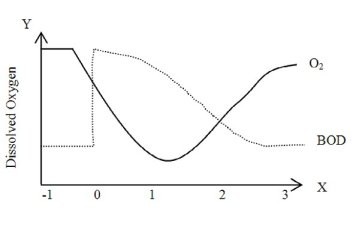Why is the geologic history of a volcano important in hazard prediction?
A) The geologic history helps to determine whether evacuation is necessary.
B) The geologic history reflects the history of subduction beneath a volcano.
C) The geologic history is an important indicator of seismic activity.
D) The geologic history reveals the frequency and style of eruptions.
D
You might also like to view...
Which of the following factors is included in the classification of tornado strength according to the Enhanced Fujita Scale?
A. multiple damage indicators and atmospheric stability B. degree of damage and atmospheric stability C. multiple damage indicators and the degree of damage D. wind speed and tornado width
 In the diagram, which of the following organisms would probably be found in the area between 1 and 2?
In the diagram, which of the following organisms would probably be found in the area between 1 and 2?
A. Trout, sludge worms, and mosquito larvae B. Mosquito larvae C. Gar, blackfly, and midge larvae D. Mayfly and stonefly larvae E. Bullhead catfish and gar
Rip currents are dreaded by surf swimmers everywhere. The standard recommendation for swimmers is if you get caught in a rip current, swim parallel to the shore. Why?
A) This recommendation is wrong; you should swim with the current and wait for it to die away, then swim to shore because the currents dissipate quickly. B) This recommendation is wrong; you should swim toward the shore as fast as you can. C) It will carry you in the longshore current which will take you ashore. D) The current is moving offshore but is confined, so by swimming parallel to shore you can swim out of the current.
Coalbed methane is never going to be a significant source of natural gas.
Answer the following statement true (T) or false (F)